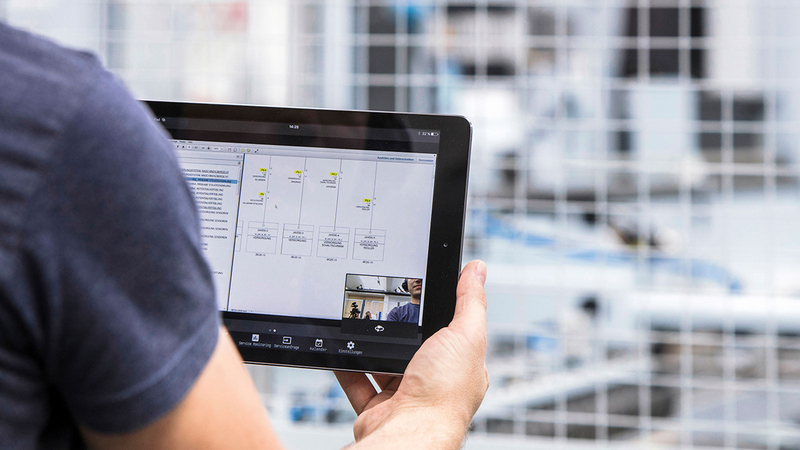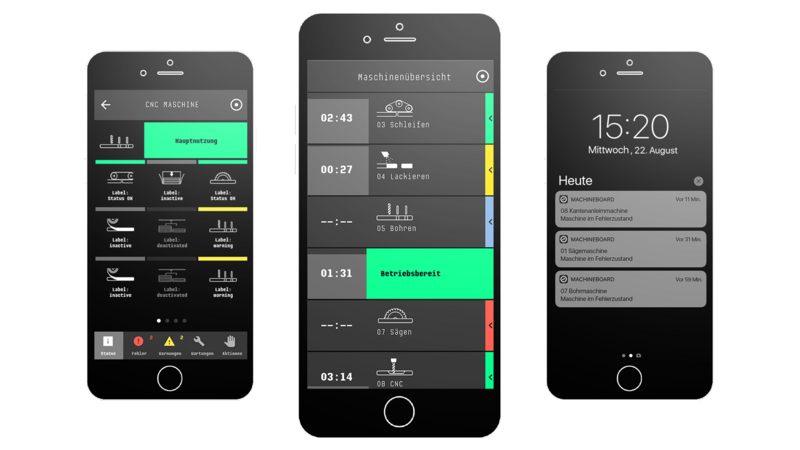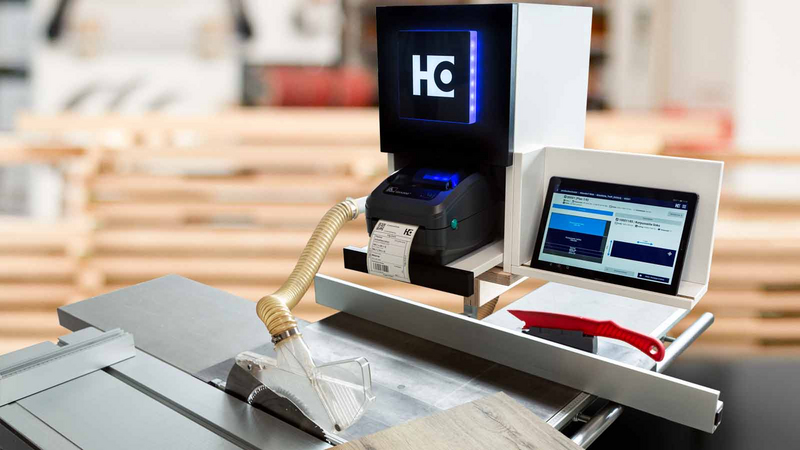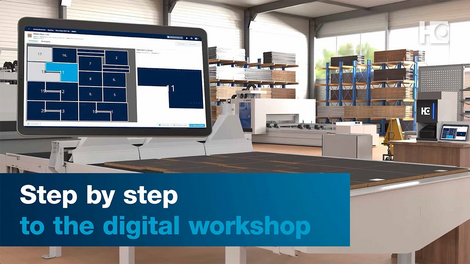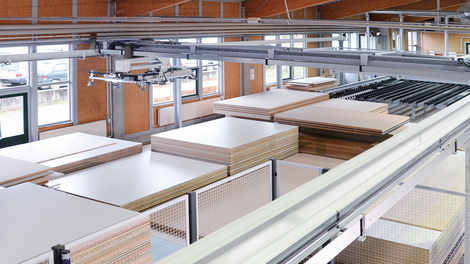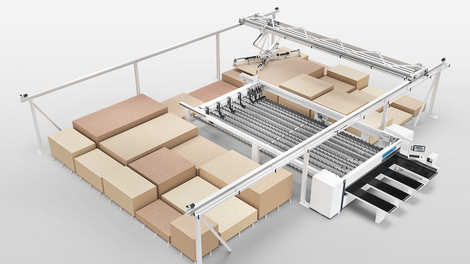Taking Industry 4.0 to the next level: Accelerating digitalisation in the Asian market
In April 2021, HOMAG launched its portfolio of management software applications and digital tools in the Asia market. With a goal of supporting and accelerating digitalisation and Industry 4.0 transformation efforts, the company seeks to empower its woodworking and manufacturing customers to automate and produce customised furniture on an industrial scale.
“The woodworking industry in Asia is facing unprecedented challenges as they cope with escalating business costs, fast-changing customer demands and competitive pressures stemming from digital transformation, due to the rise in digital ecosystems and increased connectivity across the region, as well as the impact of the COVID-19 pandemic on supply chains,” said Wolfgang Neeser, managing director, HOMAG Asia.
As many industry players begin to integrate cloud computing, data analytics, artificial intelligence and machine learning into their manufacturing process, it is important for them to harness this digital prowess in a scalable and sustainable manner.
With the introduction of ServiceBoard, which is part of the tapio digital ecosystem, as well as HOMAG CUBE and several digital assistants, HOMAG clients in Asia can now digitise their workflow and receive support at their fingertips.
tapio: Open Ecosystem For The Woodworking Industry
tapio serves as the digital backbone of all digital platforms and tools from HOMAG. As the de facto industry standard for digitalising woodworking, tapio powers the open wood industry ecosystem and connects machines and applications across different manufacturers and brands.
tapio’s partners – such as HOMAG and other machine, material and tool manufacturers – use the platform as a digital cockpit of applications to help clients digitally design and improve production without having to invest in building their own systems and infrastructure.
Using knowledge of mechanical engineering, servicing, software, and machinery status, tapio can provide customers – both big and small – with live updates of their complete manufacturing facility via a mobile phone, tablet or even a smartwatch.
ServiceBoard: Direct Service Contact Application
A part of the tapio ecosystem, the ServiceBoard application enables users to report and broadcast service incidents at the machine to the HOMAG Service Center in real time using wireless video diagnostics. It can provide a simple overview of all service cases and maintenance status, and allows users to directly contact the respective service partners for swift troubleshooting and issue resolution via video diagnosis and screen-sharing functions.
“The ServiceBoard app is a big pain relief for us – especially with regards to documenting service tickets. I would no longer purchase any further machine for our production that cannot be integrated into ServiceBoard,” commented Jürgen Müller, Chief Executive Officer of third-generation carpentry and interior design business exligno GmbH.
HOMAG Cube: Bringing Digitialisation Directly To The Workshop
Even with the ever-changing facets of workshop processes, HOMAG CUBE aims to bring digitalisation directly to workstations. It is an intelligent box and central module that connects HOMAG digital assistants and tools with the shelves and label printers to ensure optimal communication and interaction among people, apps and other elements in the factory.
Using consistent data and direct label printing on manual saws, HOMAG CUBE allows easy organisation and management of edging material. Three popular digital assistants are now available to customers in Asia, ready to be installed and integrated with HOMAG CUBE to perform the functions and product sets they support.
Cutting
intelliDivide Cutting is an optimisation software for cutting processes on saws. Production output can be customised according to different requirements such as reducing waste or decreasing production time. First, the app ensures optimised cutting patterns; after the transfer to productionAssist Cutting, a display shows which parts have already been sawn as well as a suggestion for the next part. The user
then provides each sawn part with a label containing all the relevant information as well as a barcode for the CNC and edgebanding machines.
Custom furniture and interior fittings producer Fritz Strom is an example of how small-scale manufacturers can also benefit from digital assistants. Prior to using intelliDivide Cutting, a large part of the manufacturing process was performed manually. Apart from using SketchUp to design 3D mockups for customers, material lists were created using pen and paper, and material was ordered and cut solely based on instinct. Now, he transfers the data from SketchUp and enters the remaining data into the cutting optimisation software. The system then provides several recommendations (eg, a focus on
minimum waste, shortest machine running time or easiest handling), with panel offcuts taken into consideration, and starts working on a cutting pattern and transfers that data to productionAssist Cutting. This supports the cutting process via a tablet in the workshop, and Strom can select the cutting pattern for the first panel and begin cutting.
The app intelligently guides the user through the sawing process; once a part is completed, a printer connected via the HOMAG CUBE creates a label that contains relevant information and a barcode for subsequent processing operations. The app then indicates which cut makes the most sense next.
“Now, I only need half the time for the work preparation and material consumption has fallen significantly,” said Strom, evidently pleased with the results. “Together, these two factors save us a lot of time and costs. And there are hardly any errors anymore.” Another welcome side effect is how he knows exactly how much panel material he needs to order.
The Cutting Production Set supports joiners and carpenters in cutting on circular saws as well as horizontal and vertical panels saws of any type and age.
Edgebanding
The Edgeband Management Set offers a complete overview of edge material and material stock so that users can find the right edgeband quickly and easily at any time. With vertical storage of edgebands and unique identification of edges in the rack, the system documents incoming and outgoing edges and their storage position. The printer can also be used to create labels for individual labelling of each edgeband coil.
At carpentry Löw Breidenbach Möbelbau, despite having modern machines that ensure smooth operations, the only area in which there was room for improvement was in the management of the edges. “For one thing, we never knew how much stock was there,” lamented Benjamin Löw, Managing Director of Löw Breidenbach. “Then of course the edges would run out unexpectedly. Sometimes, edges were ordered twice because stocks were still there but nobody knew about it.” Using HOMAG’s Edgeband Management Set, Löw found a solution. In the preparation stage, new edgebands can be ordered and entered into the rack. Upon arrival, they can be stored via the app and assigned to specific compartments on the edge rack after receiving its very own label. After the operator scans the label on the workpiece that needs to be edgebanded, the app will automatically display the correct edge material, and an LED light on the edge rack renders lengthy searches unnecessary. After edge processing, the operator then scans the label on the edgeband coil and enters how much edging tape was consumed. This way, all employees have an overview of the storage location and stock quantity of the edge material. “Yes, I am simply convinced that this has added value for us,” approved Löw testifying the increase in efficiency in the process he once called a “black hole”.
Sorting
With a goal of reducing waiting times due to missing parts, the Sorting Production Set supports the sorting of workshop components and provides an overview of furniture parts to be sorted for assembly, packaging or further processing. Users can simply create a digital order in the “productionManager” folder, view and confirm the processing of all parts in that order, have finished parts sorted into their respective racks, and receive feedback when the order item is complete.
According to Mario Esch, Managing Director of solid wood furniture manufacturer Ihr Möbel Schreiner, being a pilot user of the sorting assistant has been an enjoyable and fruitful process. As it had become no longer feasible for Esch to manually manage the quantity of parts that were being processed in a random order behind the edgebanding machine, Esch began searching for a remedy to simplify the process. In HOMAG and TH Rosenheim’s sorting project, he found a digital solution that automatically sorts components into his preferred compartments using a simple label-scanning process and colour coded storage system.
After the edgebanding process is complete, it is Esch’s journeyman Lars Selig’s task to glue cabinet components together. Using a tablet, he sees that all the parts are ready for assembly. The sorting assistant identifies the parts currently needed for the particular cabinet, and a blue light appears on the respective compartments from which Selig is required to retrieve those parts. Once a cabinet has been completely assembled, he requests the components for the next one on the tablet and repeats the process.
“I’m really enjoying being a pilot user in this project,” commented Esch. “A lot of the work runs just like I imagined it would. We now finally have an overview of what happens after the edgebanding machine and only now are we digitalised consistently and completely from stock through to assembly. Searching, counting, searching again and hoping that the batch is complete now all belong in the past. We just need to refine one or other of the processes.”
In Conclusion
All digital solutions are modular, cloud-based and can be used directly on an Internet browser or mobile/tablet application. All applications are automatically kept up to date and there is no need for complex software installations. “With our industry-leading tiered and digitally supported production solutions, combined with our tapio-ready machines, customers can harness the power of data for competitive advantage at every stage of manufacturing, regardless of their size,” commented Simon Zeiher, area product manager, HOMAG Asia Pacific.

